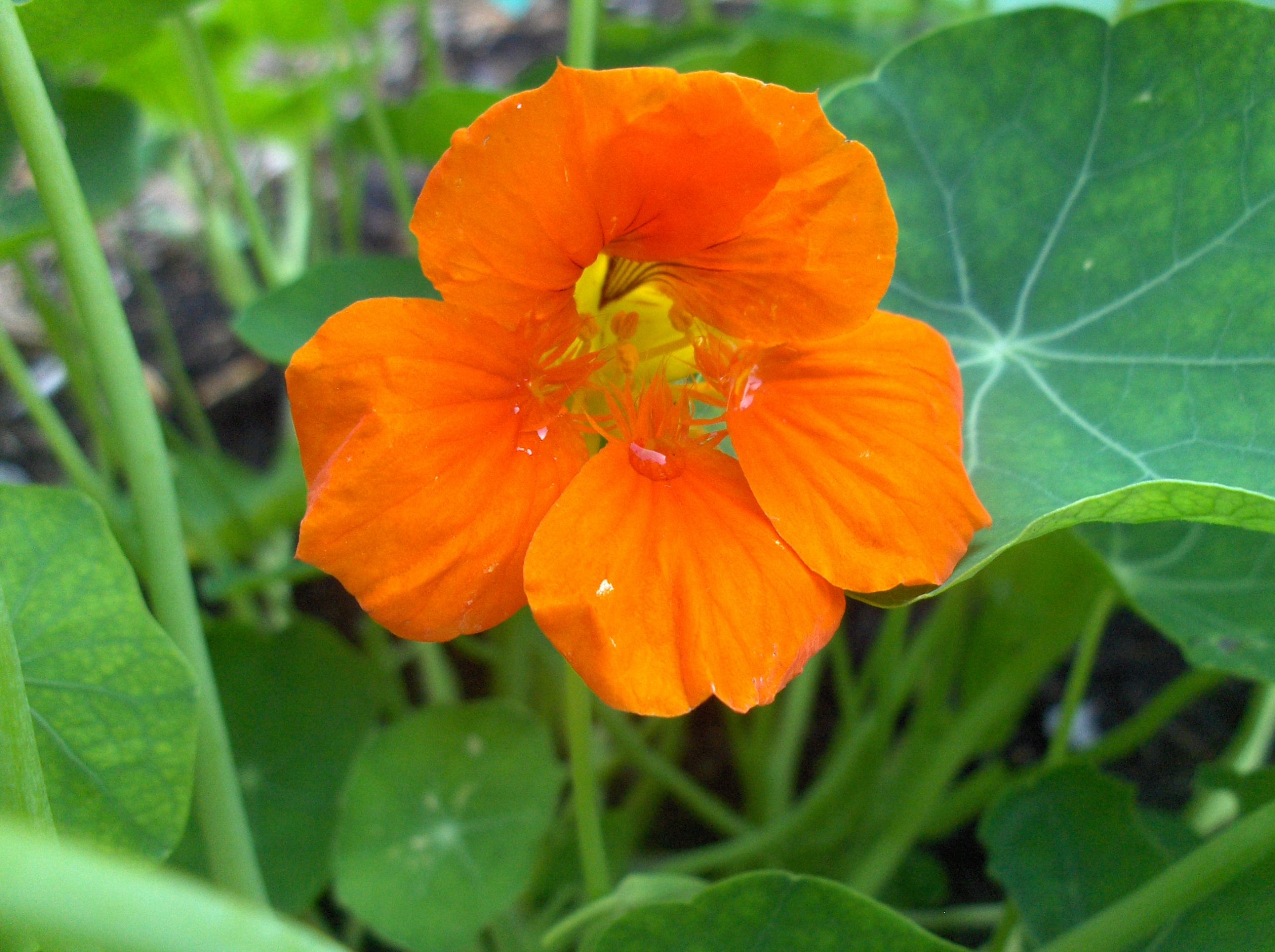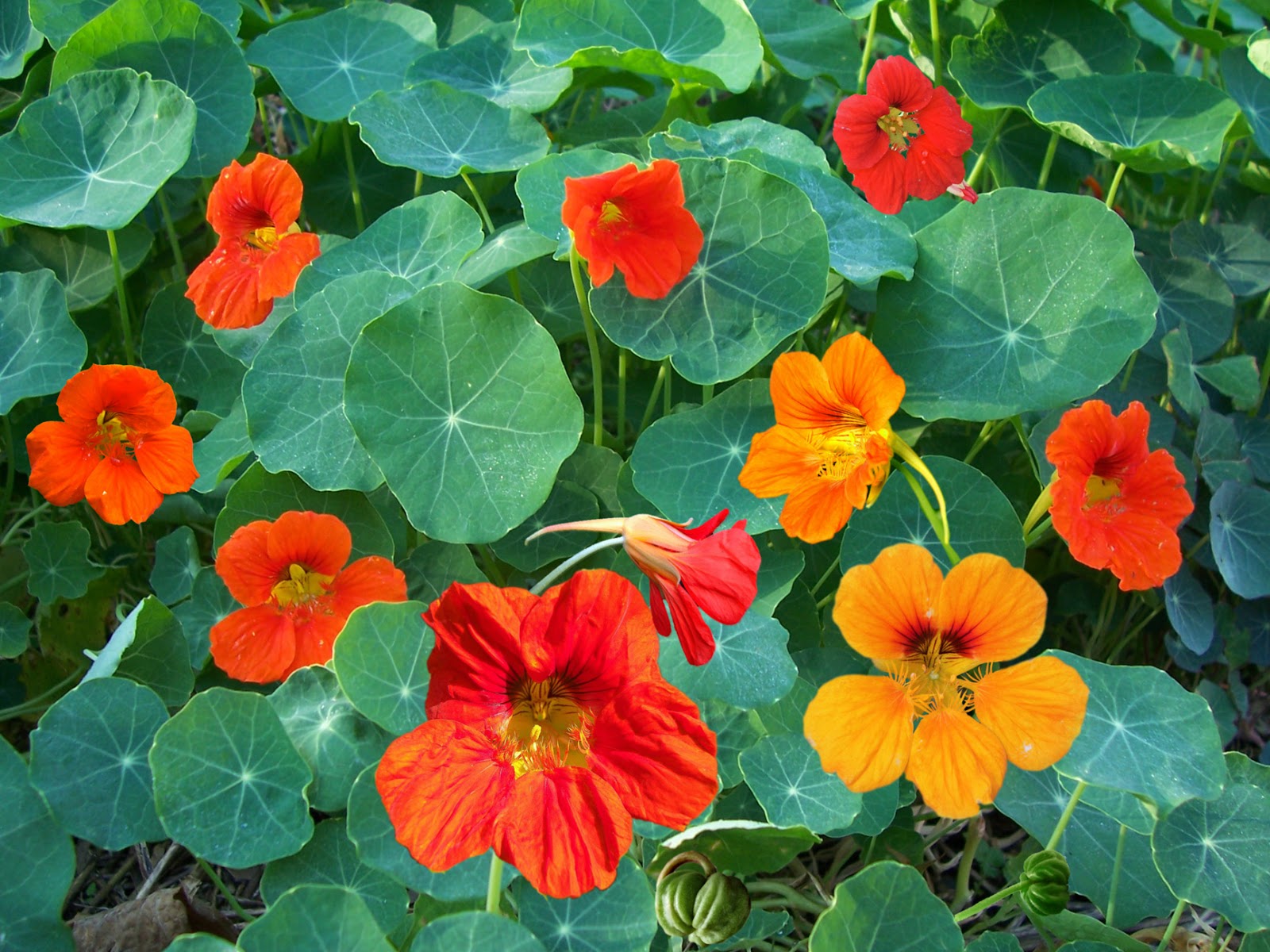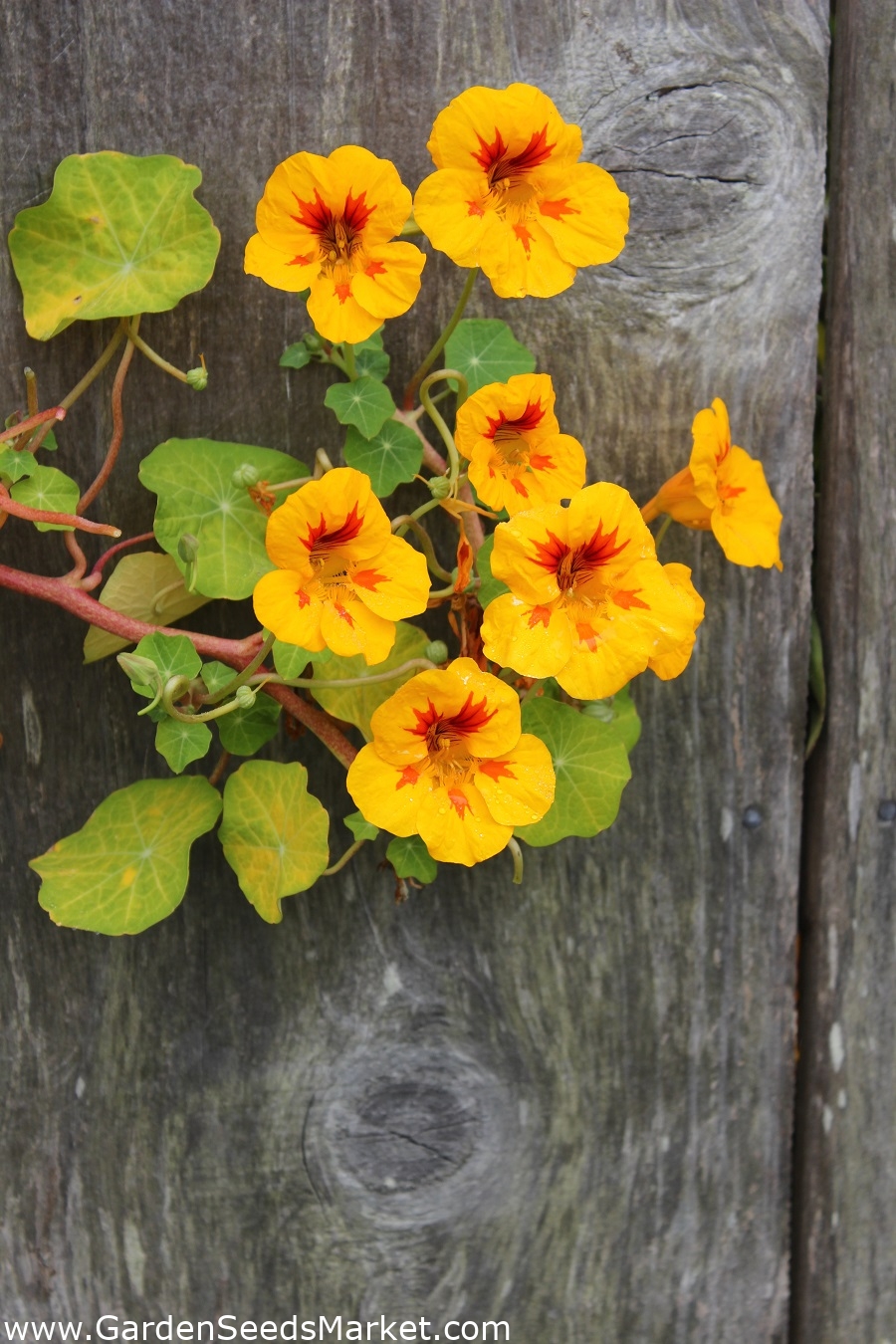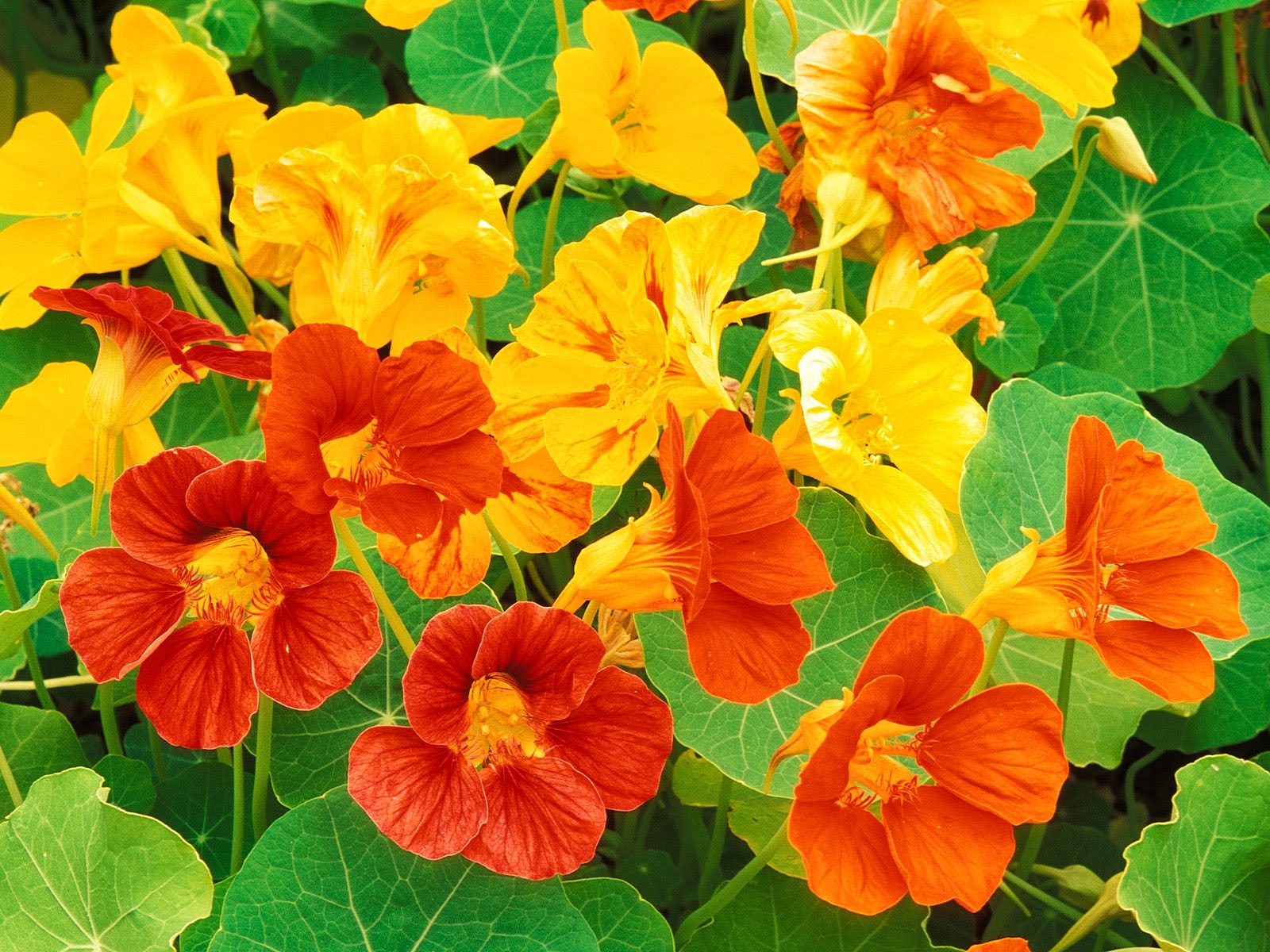PlantFiles Pictures Tropaeolum, Garden Nasturtium, Indian Cress 'Alaska Mixed' (Tropaeolum
-organic.jpg)
Garden nasturtium, monks cress (Tropaeolum majus) organic Seeds AZ Seed catalog T
A tasteful and tasty choice! The colorful and edible trumpet blooms of Nasturtium are excellent for brightening annual combinations, and for spicing up salads with their peppery bite. Uses Superb for baskets, containers and window boxes. Beautiful trained to fences, posts, latticework and trellises.

PlantFiles Pictures Tropaeolum, Garden Nasturtium, Indian Cress 'Alaska Mixed' (Tropaeolum
Tropaeolum majus, the garden nasturtium, nasturtium, [3] Indian cress or monk's cress, is a species of flowering plant in the family Tropaeolaceae, originating in the Andes from Bolivia north to Colombia.

Nasturtium Absolute (Indian Cress)
The common name, Indian cress, refers to its cultivation in India. Tropaeolum minus Linnaeus, T. peltophorum Bentham, T. peregrinum Linnaeus, and T. tuberosum Ruiz & Pavón also are cultivated in North America, but none is reported escaped.. Common or garden nasturtium + and Indian cress + Distribution. Calif. +, Conn. +,.

PlantFiles Pictures Tropaeolum Species, Mastuerzo, Garden Nasturtium, Indian Cress, Monks Cress
Tropaeolum minus (Dwarf Nasturtium) is a bushy, compact, low-growing annual with rounded, shield-shaped leaves and rich orange or reddish-orange flowers, sometimes with purple veins or with red blotches. Dwarf Nasturtium is a mini version of Garden Nasturtium and is a better choice for small gardens.

Intelliblog ALL ABOUT NASTURTIUMS
Nasturtium is a good companion plant for beans, broccoli, cabbage, cucumber, kale, melon, pumpkin, and radish. In addition, Nasturtium can be used as a trap crop, trapping pests such as aphids and giving a more appealing and delicious meal than nearby vegetable crops. Nasturtiums rank among the most common edible flowers.
HERBAL PICNIC INDIAN CRESS / NASTURTIUM
Phonetic Spelling tro-pay-OH-lum MAY-jus Description Tropaeolum majus is a warm-weather annual with long stems, parasol-like leaves, and spurred 5-petaled flowers. It is popular in various types of gardens. Available in both climbing and bushy forms. The bushy dwarf types range from 12" tall and 2' wide.

Tropaeolum Nasturtium Indian Cress Red Blossom And Leaves Stock Photo Image of tail, bloom
Nasturtium 'Indian Cress' Tropaeolum majus From the Greek "traopaeum," a pillar erected on the battlefield to display the armor of vanquished foes, for Linnaeus thought the leaves resembled a shield, and the flowers spear-pierced, blood-stained helmets (Proctor).

PlantFiles Pictures Tropaeolum, Garden Nasturtium, Indian Cress 'Alaska Mixed' (Tropaeolum
1 Choose a suitable nasturtium variety for your garden. The variety will depend on what you expect from the nasturtium, as well as the space you have available: Indian Cress - this is a vigorous trailing grower, good for a large garden; it's also known as the common garden nasturtium.

Tropaeolum Majus Garden Nasturtium, Indian Cress, Monks Cress Blooming Red Bright Flowers Close
Tropaeolum majus ( Garden Nasturtium, Indian Cress or Monks Cress) is a flowering plant in the family Tropaeolaceae, originating in South America in the Andes from Bolivia north to Colombia. It is of cultivated, probably hybrid origin, with possible parent species including T. minus, T. moritzianum, T. peltophorum, and T. peregrinum. [1] [2] It.

PlantFiles Pictures Tropaeolum Species, Mastuerzo, Garden Nasturtium, Indian Cress, Monks Cress
Tropaeolum tricolor, the three-coloured Indian cress or Chilean nasturtium, is a species of perennial plant in the family Tropaeolaceae. It is endemic to Chile, where it is called soldadito rojo and relicario. Description. Tropaeolum tricolor is a summer-dormant climber which flowers from winter to spring.

PlantFiles Pictures Tropaeolum, Garden Nasturtium, Indian Cress 'Peach Melba' (Tropaeolum majus
> Tropaeolum comes into bloom from summer to autumn. They carry trumpet shaped flowers, these are a little unusual due to having long spurs. Nasturtium flowers may be orange, red or yellow. Tropaeolum by Quinn.anya; Creative Commons. Growing Nasturtiums and other Tropaeolum Plants in the Garden

PlantFiles Pictures Tropaeolum, Garden Nasturtium, Indian Cress 'Evelyn' (Tropaeolum majus) by
Nasturtiums were once commonly called "Indian cresses" because they were introduced from the Americas, known popularly then as the Indies, and used like cress as salad ingredients. In his herbal, John Gerard compared the flowers of the "Indian Cress" to those of the forking larkspur ( Consolida regalis) of the buttercup family. [11]

PlantFiles Pictures Tropaeolum, Garden Nasturtium, Indian Cress 'Vesuvius' (Tropaeolum majus
Nasturtium is a good companion plant for beans, broccoli, cabbage, cucumber, kale, melon, pumpkin, and radish. In addition, Nasturtium can be used as a trap crop, trapping pests such as aphids and giving a more appealing and delicious meal than nearby vegetable crops. Nasturtiums are unfussy plants.

Garden nasturtium "Lady Bird", Indian cress, monk's cress low growing variety 40 seeds
Nasturtium: origin and profile. When referring to the "nasturtium" plant, also known as Indian cress, some confusion may arise because it is not related to the similar watercress plant that belongs to the Nasturtium genus. Despite being unrelated, these two cresses actually have a similar taste.

A. Talbot Heritage Edible Flowers Nasturtium aka Indian Cress or Monks Cress
Indian cress (Tropaeolum majus), also known as monks cress, nasturtium, or garden nasturtium, is a flowering plant species from the Tropaeolaceae family native to the Andes from Bolivia to Colombia. The short-lived perennial or easy-growing annual with disc-shaped foliage and bright orange or red flowers are cultivated, possibly origin hybrid.

Nasturtium, Indian Cress, Monk's Cress (Tropaeolum majus) My Garden Life
Historical nasturtiums, a gardener's dream snaplant.com Native to Peru in South America, the Nasturtium grows on the mountain slopes of the Andes Mountains. " Nasturtiums came to North America the long way. Discovered in Peru in the 1500's, two species were taken back to Spain as vegetables.